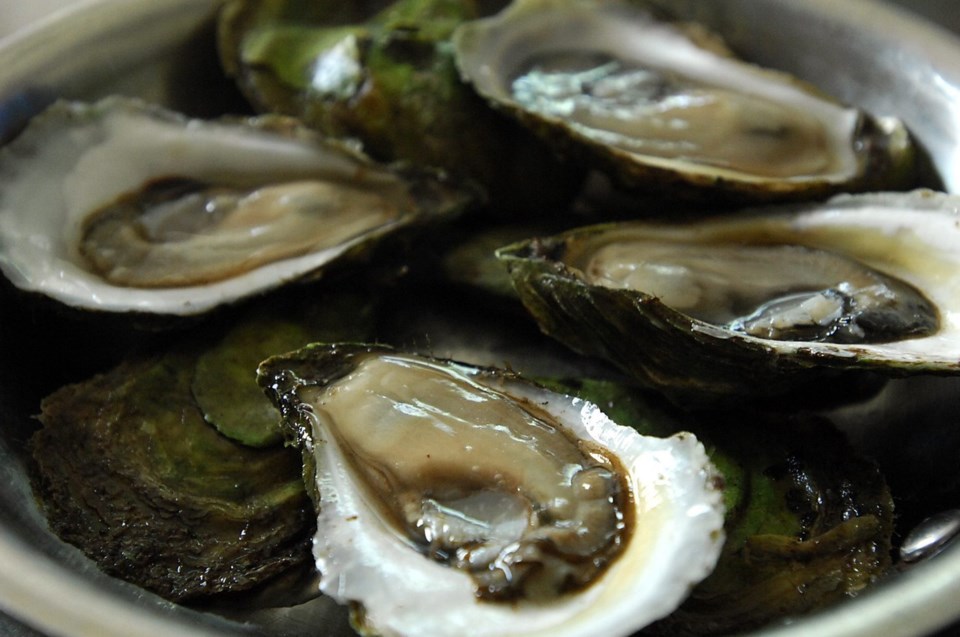CHARLOTTETOWN — A parasite threatening Prince Edward Island's world-renowned oyster industry has likely spread to a majority of the bays and rivers around the province, a federal official said Thursday.
Kathy Brewer-Dalton, a director general with the 91Ô´´ Food Inspection Agency, told a provincial legislative committee that the extensive spread of the MSX parasite — detected for the first time in P.E.I. in July — was not a surprise.
"What's happening in P.E.I. is exactly what the science is telling us would happen," Brewer-Dalton told the natural resources committee. "Even though we haven't gone to every single bay or inlet to test … it is highly likely that it is present around the Island."
The single-cell parasites reduce the lifespan of oysters but pose no risk to human health. That means infected oysters that are properly processed for human consumption remain safe to eat and export. But the disease typically kills oysters that are at least two years old, with mortality rates as high as 95 per cent within two to three years of the initial infection.
In the summer 2002, MSX was reported in Nova Scotia for the first time. It killed millions of oysters in Cape Breton's brackish Bras d'Or Lake, destroying virtually all of the island's oyster industry within a few months. It has yet to recover, though the federal government has invested $2 million in developing a land-based oyster hatchery.
MSX is also found in southern British Columbia.
"We need to manage this disease going forward," Brewer-Dalton said. "It's not going to go away."
P.E.I.'s oyster industry generated almost $24 million in revenue last year, having harvested 10 million kilograms of oysters. It's the province's third-most lucrative seafood business, behind mussels at $29 million and lobster at $298 million.
The small mollusks, particularly the wild variety gathered from the bottom of Malpeque Bay, have an international reputation as a prized seafood delicacy.
The agency's regional veterinarian officer, Danielle Williams, said that when MSX — short for multinucleate sphere X — was first detected in P.E.I.'s Badeque Bay, she was hopeful the disease could be contained.
But those hopes were dashed when officials started detecting MSX in other places, most notably a remote waterway far from Badeque Bay, where oysters are already dying from the disease.
"To have it proliferating there so strongly was really heartbreaking," Williams told the committee.
Still, the two officials stressed that the full impact of the parasite remains unknown because its life cycle and method of transmission are not that well understood. It thrives in warm, salty water, which means global warming could be playing a role in its spread.
"This is a tricky little parasite," Brewer-Dalton said. "This is not something we can necessarily stamp out."
Williams said the Island's wild and farmed oysters have yet to experience a "generalized mortality spike." But that could change in the months and years ahead.
"This is the time of year when we hold our breath," she said, adding that October and November are when death rates tend to climb.
Brad Trivers, member of the legislature for Rustico-Emerald, asked Brewer-Dalton if financial support from the federal government would be offered to the oyster industry.
"This is a stressful time (and) there's a huge impact to the industry, a huge impact to livelihoods," she said. "Until we see the full impact of this disease and where it is present, it would be very difficult to put in those supports without really knowing what those major impacts are."
The parasite was first identified in Delaware Bay, south of New Jersey, after it wiped out thousands of oysters in 1957. Within decades, it had infected oysters from Maine to Florida.
This report by The 91Ô´´ Press was first published Oct. 3, 2024.
— By Michael MacDonald in Halifax.
The 91Ô´´ Press


